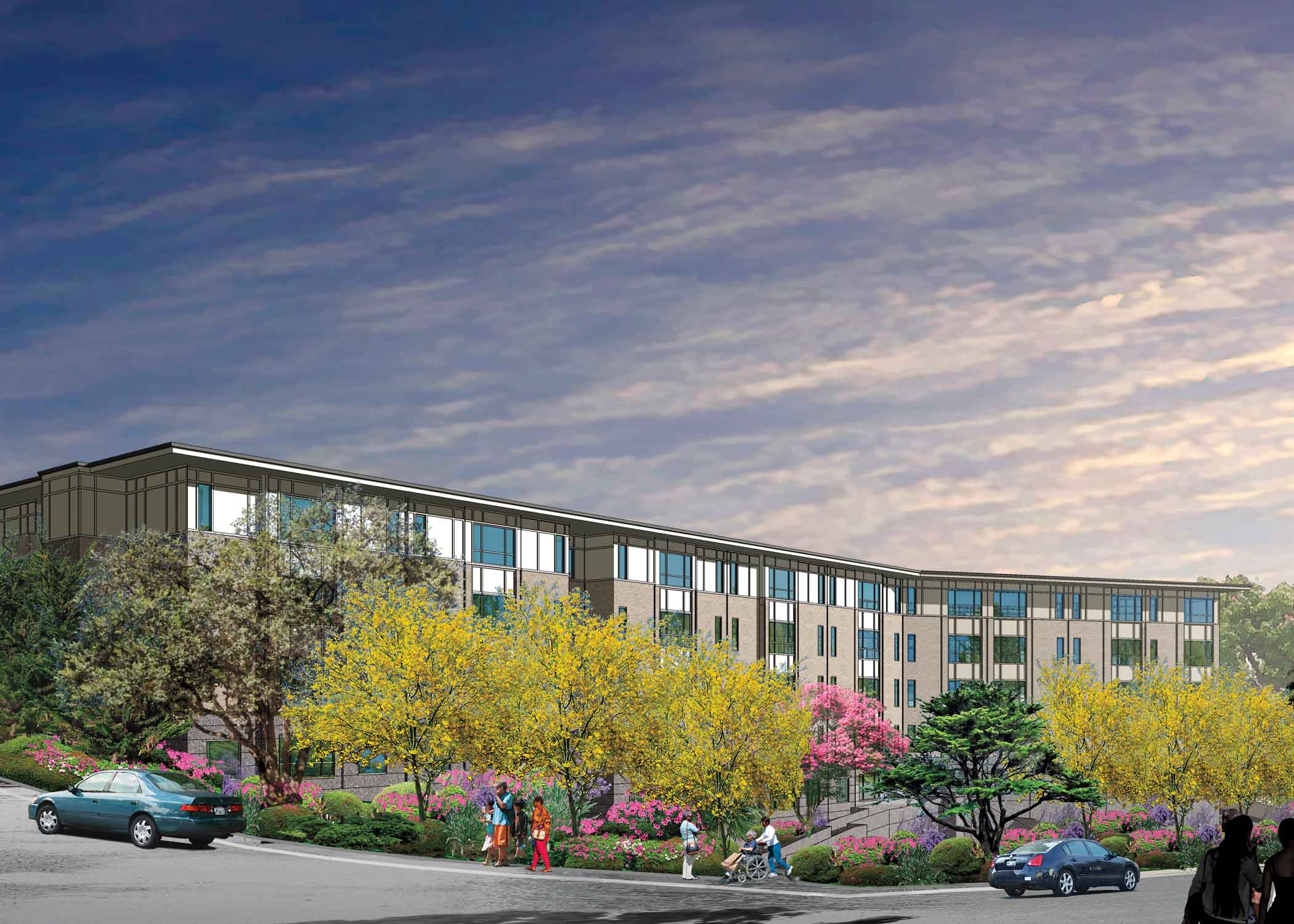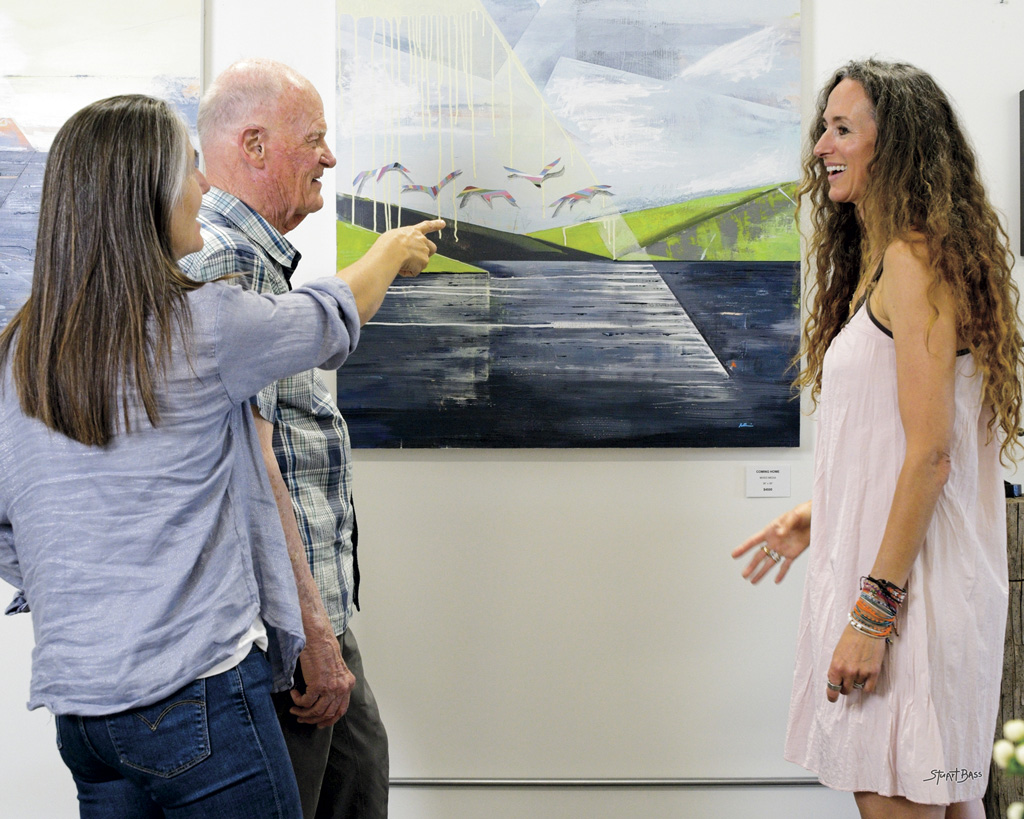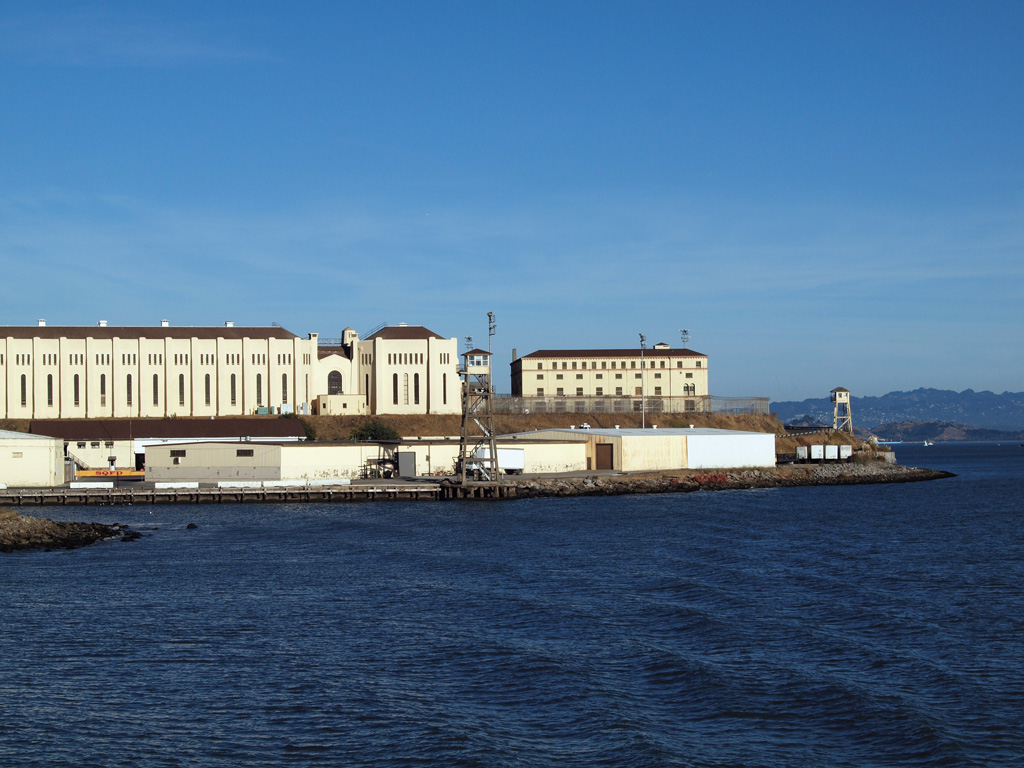News
Affordable Housing Projects on the Rise in Marin
 A five-story, 74-unit apartment building is coming to Marin City. (courtesy of AMG & Associates LLC)
A five-story, 74-unit apartment building is coming to Marin City. (courtesy of AMG & Associates LLC)Housing in Marin County has long been a challenge and a public-opinion lightning rod. For buyers and renters, it is about access and affordability. For developers with plans to tap into one of California’s most sought-after communities, it can be a gauntlet of rules and regulations. Protective of the region’s picturesque shorelines, its open spaces and small-town feel, county planners have historically resisted the type of development and residential spread that has consumed most of the Bay Area.
“Marin is well-known as a slow-growth county,” says Tom Lai, Marin County Community Development Agency (CDA) director. “But that is by design. This is a great community with a great environment, but we’re cursed because we don’t have enough land.”
While large housing projects are difficult to bring to Marin, California now mandates that local jurisdictions throughout the state make housing available to their communities, including housing for every income level.
Data from the U.S. Department of Housing and Urban Development (HUD) sets the annual median income for a family of four in the San Francisco Metro Fair Market Rent Area (that contains Marin County) at nearly $150,000. The extremely low-income level is just below $55,000, while the moderate level for a four-person family is just above $170,000. With the average monthly rental for a two-bedroom apartment costing over $3,000, housing for low-income residents is an ongoing concern.
To address similar discrepancies across the state, the California Department of Housing and Community Development (HCD) sets appropriate housing levels under its Regional Housing Needs Allocation (RHNA) program. To meet housing demands, the program recently determined that the Bay Area’s nine counties needed to create more than 440,000 units during RHNA’s next eight-year planning cycle, set for 2023–2031. This is a more than twofold increase from the previous cycle.
The decision as to how nearly a half-million units are to be distributed across the region is the responsibility of the Association of Bay Area Governments (ABAG). This board of appointed county and city officials uses various methodologies to assign the units equitably. The hope is that cities will resist the age-old practice of building new housing in areas of similar income and instead distribute the units more evenly. This type of distribution fosters more inclusive neighborhoods by placing new housing closer to city services, jobs and schools.
For Marin County, ABAG has mandated the creation of more than 14,000 new units. This is more than a 500 percent increase over the previous cycle when the association set the RHNA number at 2,298 homes.
“There is a need to provide housing for different income levels,” agrees Damon Connolly, Marin County supervisor for District 1 and a member of the Marin Housing Authority board of commissioners. At the same time, Connolly acknowledges the new RHNA numbers are alarming. “Their methodology is in question, and we are trying to understand it,” he says, referring to how ABAG decides on unit distribution.
He notes the county was concerned the association did not account for Marin’s resource constraints, wildfire threats or the fact that the region is on the verge of a historic drought.
“There are several jurisdictions around the state raising questions,” Connolly says, adding Marin may seek to appeal the steep increase in the county’s RHNA obligation. Even without the RHNA mandate, the county continues to look at ways to address Marin’s housing issues. “We have had success pursuing an acquisition and conversion strategy,” Connolly says.
An example of this repurposing strategy is the conversion of the Northgate Mall, located in the Terra Linda neighborhood of San Rafael. Designed as an open-air center in the mid-’60s, the mall was enclosed in the 1980s. As open-air shopping is again in style, Northgate’s current owner, Merlone Geier Partners, proposes a two-phase plan to transform the mall into a more family-friendly center.
Along with new restaurants and retail stores, gathering spaces and an updated cinema that will include a state-of-the-art IMAX theater, the renovation will create a multibuilding apartment complex. The project’s first proposed phase will have approximately 900 residential units, with roughly 460 units added during the second phase.

“It is early,” Connolly says about the multiuse facility. “A lot of details need to be worked out. Community members are asking good questions about the size and impact of the project on parking, water, transportation and housing affordability.”
Connolly recognizes that public involvement was critical to reshaping the original proposal, which called for a large Costco membership store and gasoline station on the site. Community input has always been an essential facet of the local planning process, but, from a developer’s point of view, it can also create political pressure on city planners to slow down, alter or even derail projects that do not gain neighbor acceptance.
To deter city and county governments from creating bottlenecks for new housing, the California State legislature passed Senate Bill 35 (SB35). The bill was approved in 2017 to address any local regulatory process seen as impeding housing increases across the state. “The premise the legislation was written under is that the process is too complicated and takes too long,” says Leelee Thomas, CDA planning manager. “If a housing project comes through that has the required percentage of affordability, then you have to approve it ministerially.”
While there are general restrictions against negligent development, a developer can petition any jurisdiction that has not met its RHNA mandate to use SB35 to facilitate its review process. This allows a project to gain approval without previously required environmental review or discretionary hearings.
Another powerful tool for developers is California’s Density Bonus Law. When 100 percent affordable senior housing or development projects are proposed, the law allows for an 80 percent increase in the number of units. Additional concessions reduce restrictions on square-footage requirements, height limitations and parking standards.
One of the first developments approved under SB35 in the county is in Marin City, the unincorporated township northwest of Sausalito. A five-story, 74-unit apartment building will be constructed on the 1.1-acre hillside parcel that is the previous site of the Village Baptist Church. While local zoning would typically keep the complex to 41 units, with utilization of SB35 and the Density Bonus Law, the project gained an additional 33 apartments.
Connolly admits this fast-track procedure could be troublesome. “A developer can set up a by-right-approval process under SB35, which, if it qualifies, would result in significant limits to the community’s ability to weigh in,” he says. “The concern is that this type of approach opens the door to oversized projects without adequately taking into account the community’s wishes and interests. It is an erosion of local control.”
Along with new development, Marin Housing Authority has found other ways to increase affordable units. One such strategy is the Landlord Partnership Program, which addresses the idea that many apartment owners are hesitant to rent to very low and low-income residents. Connolly notes the county’s research has shown it is a misconception that such residents are somehow less responsible than other tenants.
“What the county came up with was a business proposition that states if a landlord accepts low-income tenants and there is damage to a unit, the county will cover the costs. It is basically an insurance risk pool,” he says.
Another way Marin is expanding its affordable housing numbers is by simplifying the process and lowering the cost of building permits for accessory dwelling units (ADU). ADUs are traditionally backyard cottages or in-law apartments and are fast becoming popular throughout the region.
“We believe it is a solid way of bringing new affordability onto the market,” Connolly says of the ADUs. “People who want to repurpose a portion of their house in fairly short order, and without regulatory hurdles, can turn a part of their home into an accessory dwelling unit.” The program helps Marin meet its housing goals and augments the homeowners’ monthly income.
With similar strategies planned for the future, Connolly is optimistic about the county’s ability to meet its housing needs while retaining the charms that define the North Bay. “Marin is committed to affordable housing solutions through a variety of strategies,” he says. “The goal is to do it in a way that makes sense for our communities.”













